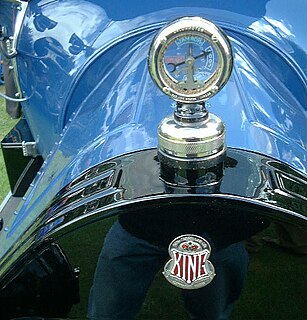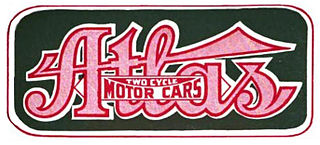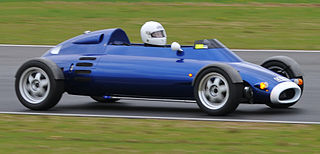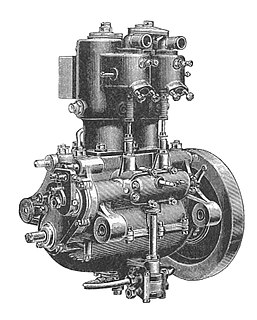
The Mors automobile factory was an early French car manufacturer. It was one of the first to take part in automobile racing, beginning in 1897, due to the belief of the company founder, Émile Mors, in racing's technical and promotional benefits. By the turn of the century, automobile racing had become largely a contest between Mors and Panhard et Levassor.

The Cudell was a German car made from 1898 to 1908. It was made in Aachen until 1905, and thenceforth in Berlin.

The Jackson Automobile Company was an American Brass Era automobile manufacturer located in and named for Jackson, Michigan. The company produced the Jackson from 1903 to 1923, as well as the 1903 Jaxon steam car and the 1904 Orlo.
There were at least three different cars called Pilot. There was a British car built 1909-1914 in London; a US car built 1909-1924 in Richmond, Indiana; and a German car built 1923-1925 in Werdau.

The King was an automobile built in Detroit from 1911 to 1923, and in Buffalo in late 1923, with an additional car built in Detroit in 1896.
W.W. (Winter), was an early British car made by Winter and Company of Wandsworth, London. They made two models between 1913 and 1914.

The Atlas car was built in Springfield, Massachusetts from 1907-1911.
Marbais et Lasnier was a French manufacturer of automobiles.
Automobiles Stabilia was an automobile manufacturer based on the north side of Paris between 1906 and 1930. Although the name of the company changed a couple of times, the cars were branded with the Stabilia name throughout this period. The company specialised in lowered cars featuring a special patented type of suspension.

Vinot-Deguingand was a French automobile producer.

Majola was a French producer of engines and automobiles, established in 1908 and producing automobiles from 1911 till 1928.
Robinson & Price was a British automobile manufacturer based in Liverpool (Lancashire) from 1905 to 1914.
Cumbria Motors was a British cyclecar manufacturer based in Cockermouth (Cumberland) in 1914.
Hugh Kennedy & Company was a Scottish automobile manufacturer, known for the Ailsa model, from 1907–1910.
Dayton, Dayton Dandy, was a British automobile manufactured in 1922 by the Charles Day Manufacturing Co. Ltd. in the London Borough of Hackney W10. The Dandy was a Cyclecar with a single cylinder Blackburne engine producing 4 hp.
YEC was a British motor car. Approximately 50 cars were manufactured in Sheffield from 1907–08.

Gordon, Gordon Armstrong, was a British cyclecar produced in Beverley Yorkshire by 'East-Riding Engineering' from 1912–1916. Production was halted by World War I.
The Gordon, made by Vernons Industries Ltd. based at Bidston, then in Cheshire, was a British three-wheeled motorcar produced from 1954 until 1958.
Newey, Newey-Aster, Gordon Newey, Gordon Newey Ltd, G.N.L. (GNL), (1907-1920) was a British automobile manufacturer from Birmingham.

The Light Car Company was a British manufacturer of automobiles.
















